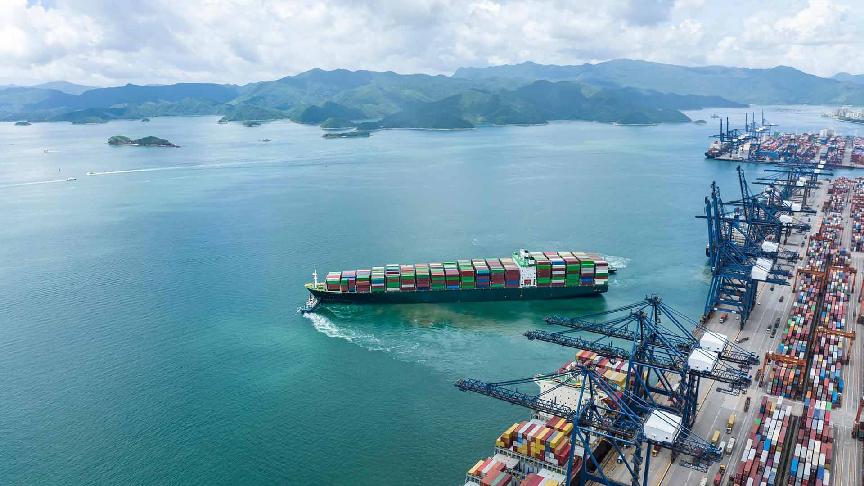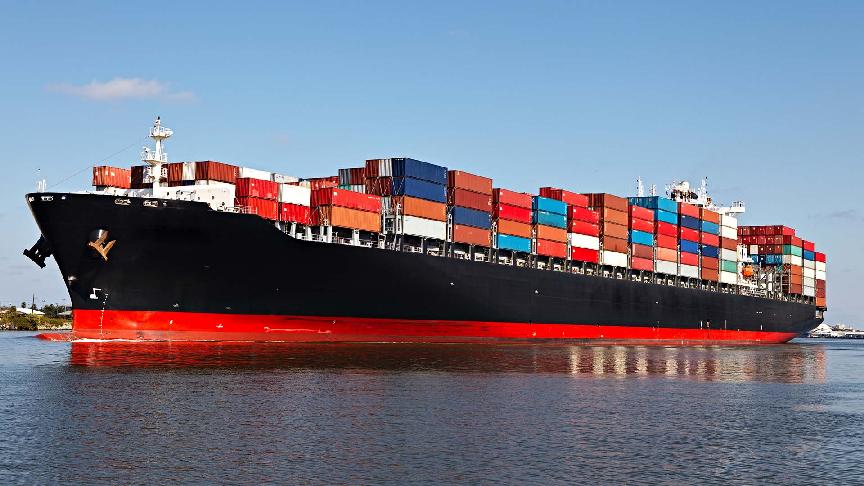25 June 2025 (Lloyd's List) - WHAT happens next?
Somewhere between spot rates topping out at just over $100,000 a day on Monday and oil prices experiencing their sharpest daily drop in nearly three years, a senior charterer responded to that question with his own question.
“Does the ceasefire mean that owners will be prepared to go back into the Red Sea?” he asked, genuinely curious to know whether any owners had started talking yet.
Whether “The 12-day war” lives up to the title authored by Donald Trump remains to be seen, but it seems shipping is already looking at the next big tipping points that will determine market fortunes.
The situation in the Middle East remains fluid, but what happens next in the Strait of Hormuz will now directly influence shipping’s big outstanding risk factors: Iranian sanctions and the reopening of the Red Sea.
Risks recede, oil continues to flow
Assuming the ceasefire holds, the already limited threat to non-Israel and non-US affiliated ships recedes. That, at least, appears to be the consensus view of oil traders and the security analysts advising remarkably unruffled shipowners.
While the impact on tankers has remained relatively muted and fixtures have continued regardless of the elevated risk levels, that risk is still being managed carefully behind the scenes.
“Any company that has a cargo loading in the [Middle East Gulf], will be looking for Chinese vessels, Turkish vessels… essentially vessels from countries that are perceived as neutral right now,” explained one charterer on Tuesday.
But by Wednesday, both the oil and shipping markets were looking remarkably similar to June 13, just before Israel launched its offensive against Iran.
Risks remain prevalent, it’s just that they are not affecting trade.
AIS and GPS jamming continues to be a problem that is likely to outlive this latest security flare up. Ships with US affiliations continue to avoid the gulf and Israeli-linked tankers have steered clear of the Strait of Hormuz and Red Sea for several years.
But the initial fears the Iranian regime could yet choose to double down and disrupt shipping through the Strait of Hormuz in response had evaporated by Tuesday evening.
Even as missiles were flying overhead, Lloyd’s List was talking to multiple shipowners who were continuing to fix tonnage, assured that the risk was minimal.
“The market has spiked, but in our minds, merely driven by fear and sentiment, rather than significant volume increments,” explained one owner with a ship in the gulf on Monday.
Oil and gas continued to flow unimpeded from the region throughout the fighting, with Iran actually increasing its exports. Any minor pause to tanker traffic was brief and negligible in terms of overall volumes moving, according to analysis of Lloyd’s List Intelligence vessel-tracking data.
As the oil analyst Javier Blas pointed out, Iranian oil production is expected to increase this month, setting an anticipated seven-year high above 3.5m barrels a day in June.
“That bears repeating: Iranian oil production is up, not down, despite nearly two weeks of Israeli and American bombing,” said Blas.
That’s not to say that the threat of missiles hitting Iranian oil infrastructure did not have any impact. As with previous high risk periods, Iran’s tankers dispersed from Kharg Island, only to return to keep loading once the risk receded.
Given China’s recent stockpiling, Iran has been building up its floating storage of late, but much of that has been positioned safely in the South China Sea, rather than the Middle East Gulf.
The only real impact on shipping operations will be a small spike in illicit ship-to-ship transfers off Malaysia as a result of the accelerated outflow of Iranian crude.
Nothing was hit, shipping did not stop moving and Iran continued to trade; this was a war that created a lot of headlines, but had very limited direct impact on the market.
The Iran question
The lasting impact, however, may end up being policy shifts rather than military ones.
In the wake of his ceasefire announcement, Trump posted on social media that “China can now continue to purchase oil from Iran”.
While this may not represent an immediate reversal of policy after his administration spent months imposing sanctions on Chinese refineries for buying Iranian crude, it does suggest that a “deal” is on the agenda.
The White House later clarified that Trump was not reversing policy, but was merely pointing to the results of his strikes on Iran. But taken together with his other statements this week regarding oil prices and how they should not be allowed to move above $70 a barrel, and the clear indication that he still thinks Washington and Tehran can sit down to talk, the picture is changing.
Speaking at the Nato summit in The Hague on Wednesday, Trump said the US will talk to Iran “next week” and “may sign an agreement” on Tehran’s nuclear programme.
At the very least it now seems highly unlikely that the White House will tighten oil sanctions on Iran and a potential lifting of the maximum pressure campaign is significantly more likely than before June 13.
The significance of that has more to do with tanker fortunes than Iran’s oil exports, which have risen more than threefold over the past four years, with China buying the bulk of those shipments, according to the US Energy Information Agency.
A lifting of sanctions and normalisation of Iranian loadings, however, would see a return to mainstream shipping fixtures and, at least in theory, an end to a significant portion of the shadow fleet tactics currently skewing the market and stretching tonne-miles.
Meanwhile, the US position on Russian sanctions seems similarly open to negotiation.
Trump will buck Europe’s pleas to ratchet up sanctions on Russia, Secretary of State Marco Rubio said on Wednesday, saying the US still wants room to negotiate a peace deal.
All this has a potentially material effect on the shipping markets. Easing US sanctions would lessen the current market impact on the shadow fleet, even if Europe and the rest of the G7 hold the line.
If competing for the same barrels, these older, less efficient vessels will lose out to the more modern mainstream fleet, once the sanctions-induced economic incentives are shifted.
A Red Sea reopening?
But if the sanctions situation is shifting, does it follow that the Red Sea question is also answered? As our senior charterer put it: “Does the ceasefire mean that owners will be prepared to go back into the Red Sea?”
The answer there is less clear.
If Trump is convinced he can get Tehran back to the negotiating table, then the final risk from Iranian funded proxies, the Houthis, becomes negligible. That, at least, is the thinking from charterers keen to trigger an end to the majority rerouting away from Red Sea risk.
The problem with that assumption though is that nobody is entirely clear how much control Tehran really has over the Houthi threat.
While Iran provides the Houthis with weapons, training and intelligence, it’s not accurate to say Iran has direct command and control over them. The Houthis are not simply an Iranian proxy, but rather a group with its own local goals and a degree of autonomy.
In the wake of recent shifts in Middle East power, notably the fall of Bashar al-Assad’s regime in Syria, the Houthis have been increasingly keen to project strength, regardless of US strikes.
The Houthis have their own motivations and strategic goals, which may not always align perfectly with Iran’s, particularly if that involves striking a deal with the US.







